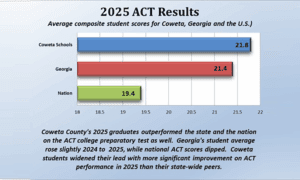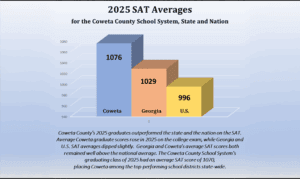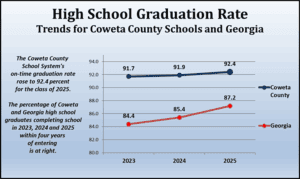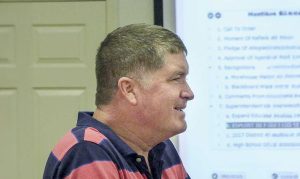The menu of learning service models used in Coweta County schools to help move students toward high school graduation is increasing. Superintendent Steve Barker highlighted the growing list of services at a recent meeting of the Coweta County Board of Education.
Barker noted that an increasing number of students are engaged in learning service delivery models based off of the traditional high school campus. Currently, during any one of the four blocks that make up a high school day, an average of 175 East Coweta High School students, 155 Newnan High students and 105 Northgate High students attend classes away from their base high school in a non-traditional learning model, Barker said.
In planning for future school expansion, Barker noted that students often receive their high school education in ways that differ markedly from a generation ago, or even just a few years ago.
“When it comes to high school curriculum and instruction, we’re seeing it occur more and more in settings other than a traditional classroom,” said Barker.
The school system has worked to enlarge the number of options and partners for dual-enrollment of students and will begin virtual learning programs as an option for eligible students in 2013, said school system spokesman Dean Jackson. When coupled with a growing number of students who attend for-credit work-based programs and other non-traditional graduation pathways, the existing base high schools can manage larger school enrollments on their current campuses, Jackson said.
Coweta high school learning service delivery models include:
-Traditional on-campus classroom instruction at the three base high schools;
-Traditional or specialized high-school courses taken at the Central Educational Center charter school;
-Dual-enrollment courses – classes that earn students credit toward a high school diploma and post-secondary credits – at West Georgia Technical College, the University of West Georgia or other partnering higher-education institutions. These courses have the added benefit of being able to save parents thousands of dollars in future tuition costs;
-Work-based learning and apprenticeship courses with businesses that earn students credit towards graduation and career-field experience;
-The Performance Learning Center and other special programs which allow students to take credit classes at their own pace;
-Early graduation opportunities whereby eligible students complete graduation requirements after the fall semester of their senior year; and
-Virtual Learning, which provides students a rigorous, on-line, teacher-led virtual classroom environment. Coweta high schools will pilot such courses to eligible students via the Georgia Virtual School, which is a program of the Georgia Department of Education’s Office of Technology Services.
While traditional classroom instruction still makes up the largest share of students’ high school experience, the growth of non-traditional learning service delivery models is expected to continue to grow in coming years, and should be considered as the school system works to maximize current school facilities, Barker said.












Leave a Comment
You must be logged in to post a comment.